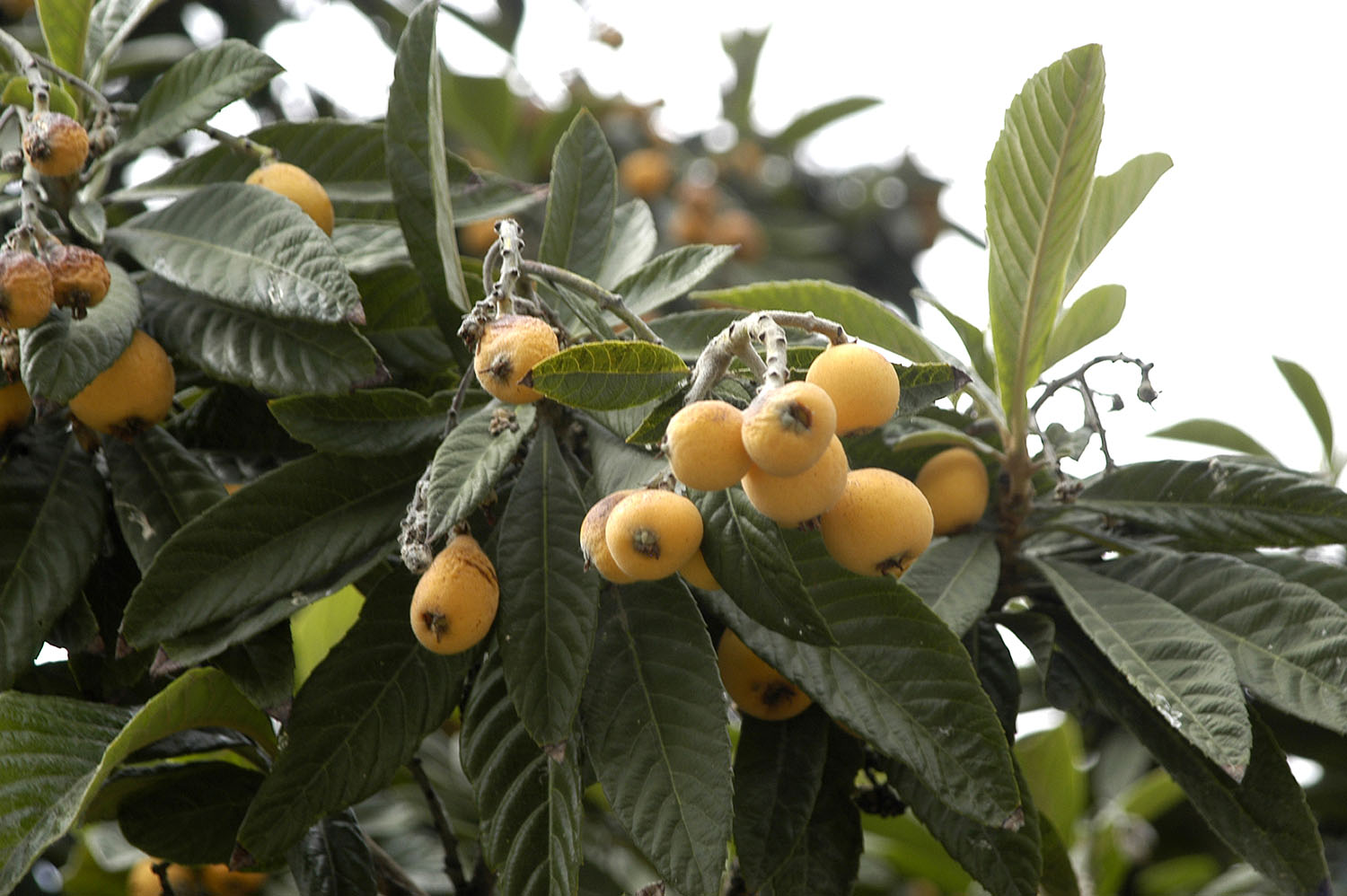Dr. Michael Tierra L.Ac., O.M.D.
Biological Name: Rosaceae Eriobotryae japonicae
Other Names: Loquat leaf, pi pa ye
Is a subtropical tree belonging to the rosaceae family. The fruit, kernel and tender leaves are all used for medicinal purpose. Nature and flavor : sweet sour and moderate.
Constituents: Its flesh contains malic acid, tartaric acid, citric acid, tannate, carotene, vitamins A, B and C. It leaves and kernel contain amygdalin (amygdalin is otherwise known as the anti-cancer vitamin, B17 or laetrile).
Properties: Antitussive, expectorant, antiemetic
Action: Beneficial to the vital energy of the lungs. It dissolves and expectorates phlegm and alleviates cough. Relieving coughing and vomiting. The flesh promotes the secretion of body fluids and eliminates thirst. The tender leaves are used for various types of coughs but the under side is usually prepared by rubbing the hairs off so they do not irritate the throat.
Indications: Coughing due to evil heat in the lungs. Chronic and acute bronchitis. Thirst due to evil summer heat can treated with loquat leaves, drunk as a substitute for tea.
Dosage: 6-15 grams
Safety: Loquat leaf should not be used for cough caused by cold.
Recently in Europe, I had a conversation with some people who had stayed on the island of Cyprus in the Mediterranean. They mentioned how herbalists there were prescribing loquat leaf tea with some success to patients with various types of cancer. I knew that loquat had the hydrocyanic glycosides in common with apricot and peach seeds as well as wild cherry tree bark. These hydrocyanic glycosides are also known as amygdalin better known from the work of Dr. Krebs as laetrile and that laetrile is still respected by many people as both a cancer preventive and cure for some cancers.
In treating one of my patients for a rare form of blood vessel cancer (by the way, he seems to be doing very well so far), a Japanese neighbor of his recommended that he drink loquat leaf tea (just as herbalists on Cyprus were recommending) and that he eat 2 loquat seeds daily because these are some 1300 times higher in amygdalin than the leaves. She told him of a man with bone marrow cancer who cured himself of bone marrow cancer by eating a loquat seed every morning and evening. She said the cancer disappeared after one month. He then drank loquat seed wine a half ounce daily while eating a macrobiotic diet. He also applied the shiny side of the loquat leaf over the tumor site and did moxabustion over this area daily. The woman spoke of other cancers including liver and pancreatic cancer that were cured following the same regime
Since these are incurable cancers, I think it is reasonable that one follow this loquat leaf and seed treatment and macrobiotic for otherwise incurable cancers.
Evidently loquat leaf is a very popular folk treatment not only for cancer but many other diseases in Japan. In fact, she showed me a small book in Japanese called “Natural Remedy” by Yuriko Tojo (1988) that describes various ways to use the loquat both internally and externally for moxa. I think it is highly significant that with Dr. Krebs and the laetrile controversy in the US, the use of loquat leaf on the island of Cyprus for cancer and then its use in Japan not only internally but externally with moxabustion, that there must be something to this remedy. In any case, I happen to be one of those who really enjoy eating loquats and I think the tree which seems to grow in diverse climate zones is very beautiful. It wouldn’t hurt for anyone to have their own home loquat tree.


Thank you for interesting and inspiring article. Some years ego I bought loquat (Rosaceae Eriobotryae japonicae) fruits in the store, they where supper delicious and as you mentioned here, they where thirst relieving somehow satisfying fruits very light in digestion, taste like pineapples with apricots together, but not as sweet. Then I saved the seeds and searched on the web about it, I could find some information that they were very healthy to consume, and that the leaves are the medicine. I planted all of the seeds in my Greenhouse they sprouted very quickly. Now I have many plants, some bigger and some survived our Lithuanian winters outside Greenhouse. They are four years now, not flowered yet I really hope that they would do so. It is a beautiful tree and the leaves I use for the tea. The taste is pungent slightly sweet-sour in some way like a green tea. I guess I’m lucky.